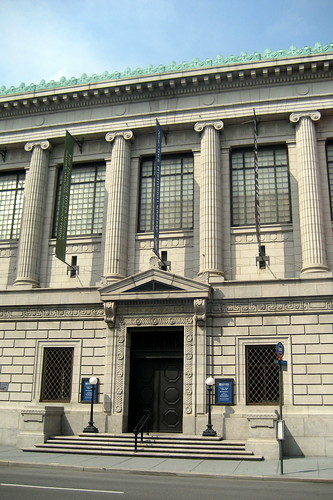ECPN Conference Call
October 15, 2009
Rachel Penniman
Ryan Winfield
Ruth Seyler
Katie Mullen
Anne Simon
Karen Pavelka
Jason Church
I. Welcome
II. Project Updates
1. Communications –
a. Conference Call – Ryan and Ruth say recognize that the calls are committee conference calls. People would still be invited to sit in and the call number is posted, but we won’t set out blasts. Issue and theme calls could be specially promoted and separate. These could include interviews, webinars, twitter conferences.
b. Museums Wiki – we’ve been asked through a comment on the blog to list ECPN here. Katie will post this.
http://museums.wikia.com/wiki/Online_communities
c. Effort to get calls for bloggers is ongoing. Ryan will look at analytics. Investigate with Anagpic to see if they will let us link from that site. Karen will get us a name to contact about the ANAGPIC website. One new possibility is to invite people who are doing posters for AIC to submit them as blog postings, but that is contingent upon how presenting the posters after the conference is over is being handled by the poster committee.
2. Outreach – Angels Project
a. Ruth has been contacting sites; other folks have also been assigned sites to contact. Karen has contacted Paul M. for information on scheduling. From the board’s point of view the Angels project is the most visible and important thing we’re doing. That said, not much can be done until the site is selected. What can we anticipate? One example is supplies – however, again, that will be contingent upon what Paul hands over in terms of scheduling. Jason asks, if the project can still be moved to a Saturday – Ruth says both the Tuesday and Saturday are viable dates at this point.
b.Mentoring program –
1.AIC staff did the matching this time, due to concerns about letting the information on the matching forms go out of the office. Next time around, we may designate one officer from the group, the board liaison and a staff member to do the matching, so that multiple perspectives are represented.
2. We need to come up with a list of criteria that can be tested to see if mentoring is successful. Possibilities are geographic area, specialty, and manner of communication. Contact the parties that are participating 3 months out and solicit feedback on whether the match is good for both the parties involved. Figure out how to adjust matching process based on this feedback. This information, not connected to names, can be shared with the group. We should allow people to apply as a mentor or mentee as they become interested in the program, and not set a yearly deadline to apply.
3. Lack of architectural conservators applying as mentors is a problem – two more mentors in this area are needed. Ryan has sent an email to be posted on their specialty group listserve, but is not sure if it has gone through. Karen suggests two people to contact, and Jason has the name of one architecture conservator who has definitely expressed interest in being a mentor.
c. Purchasing a Recorder – AIC’s lendable AV equipment lives with (the multimedia coordinator for AIC) Brett – the recorder will too. Jason will contact Ryan about creating a form for lending that includes a disclaimer that AIC retains ownership of any recording made with it.
3. Professional Development/Training
a. Rachel reports on behalf of Amber that Amber has been working w/ IIC on attracting submissions for a student poster session for their Istanbul conference. They will make their outreach effort to U.S. grad programs through ECPN.
b. Ryan will contact Amber about her questions on finalizing the survey. Survey Monkey can be used for the survey instrument.
III. New Business/Open Discussion
1. Amber Kerr may attend IAG on behalf of Rachel Penniman.
IV. Setting of next call and adjournment
Next call:
Thursday November 19th, 1PM.

